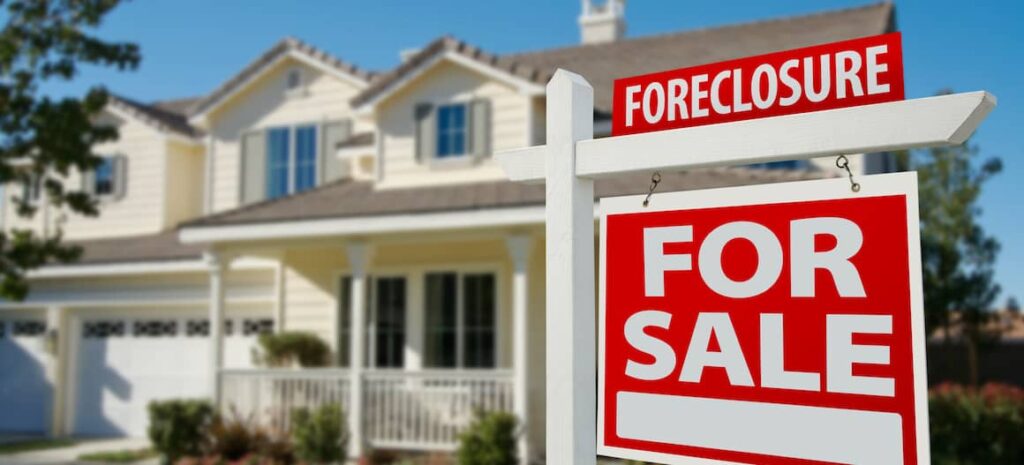Some 1.4 million (1,372,396) residential properties in the US remain unoccupied, according to ATTOM’s first-quarter 2025 Vacant Property and Zombie Foreclosure Report. That number is equivalent to the fourth quarter of last year and slightly higher than a year earlier, representing 1.3%, or one in 76 houses, nationwide.
In the first quarter of this year, 212,268 residential properties in the United States were in foreclosure, according to the data. This is a decrease of 1.5% from the fourth quarter of the previous year and 12.6% from the first quarter of 2024. Following a spike in cases following the lifting of the statewide moratorium on lenders pursuing delinquent homeowners, which was put in place during the COVID-19 pandemic, in mid-2021, foreclosure activity has been declining for five straight quarters.
In the first quarter of 2025, 7,094 of those pre-foreclosure properties remain unoccupied as zombie foreclosures, or pre-foreclosure properties that the owners have abandoned. That number is down 3.3% from a year ago, but it is essentially the same as it was in the previous quarter.
The first-quarter data is only one example of a long-term trend where zombie properties make up a very small percentage of all homes in the country. Only one out of every 14,668 residences in the United States have been evacuated because of foreclosure, which is an improvement above the one in 13,905 during the first quarter of last year and the one in 14,591 in late 2024. The recent peak of one in 11,412 that was observed in late 2023—one of the lowest values in the previous five years—is still well below this ratio.
According to those figures, zombie foreclosures—which can draw vandals and propagate blight—are absolutely or nearly entirely absent from the majority of neighborhoods in the U.S. The situation stands out once more as one of the several long-lasting consequences of the country’s 14-year property market bubble.
According to Rob Barber, CEO of ATTOM, “you would have to walk through most American communities for a very long time to find even one zombie foreclosure—and even then, you might not find any.” Compared to the late 2000s, when a failing housing market and abandoned houses posed substantial hazards to many areas, this represents a dramatic turnaround. One of the many advantages of the country’s protracted property market boom for both homeowners and renters is highlighted by the most recent statistics.
He added that “we have every reason to believe this will continue into the foreseeable future, given high levels of equity flowing from rising home prices and historically low supplies of homes for sale that make the few abandoned properties out there more likely to be snapped up by buyers.”
The State of U.S. Foreclosures
In Q1 of 2025, owners countrywide evacuated 7,094 residential properties that were at risk of foreclosure, a decrease of 0.3% from 7,338 in the first quarter of 2024 and 0.2% from 7,109 in the fourth quarter of 2024. In 22 states, the number of zombie properties has decreased or stayed constant on a quarterly basis, typically by less than 25. 28 states have seen a little increase in the number.
The biggest percent decreases from the first quarter of 2024 to the first quarter of 2025 in states that had at least 50 zombie homes a year ago are in:
- Maryland (zombie properties down 38%, from 104 to 65)
- Georgia (down 35%, from 81 to 53)
- California (down 30%, from 310 to 217)
- New Jersey (down 23%, from 260 to 199)
- Ohio (down 16%, from 597 to 503)
The largest annual increases among states that had at least 50 zombie foreclosures in Q1 of 2025 have come in Missouri (zombie properties up 85%, from 27 to 50), Michigan (up 51%, from 55 to 83), South Carolina (up 31%, from 74 to 97), Indiana (up 28%, from 215 to 276) and Kansas (up 26%, from 69 to 87).
For 12 consecutive quarters, the vacancy rate for all residential properties in the United States has stayed relatively constant at 1.3%. The most recent number, 1.32% (one in 76 homes), is marginally higher than 1.26% in the first quarter of last year and nearly identical to the 1.31% level in the fourth quarter of 2024.
To read the full report, including more data, charts, and methodology, click here.








